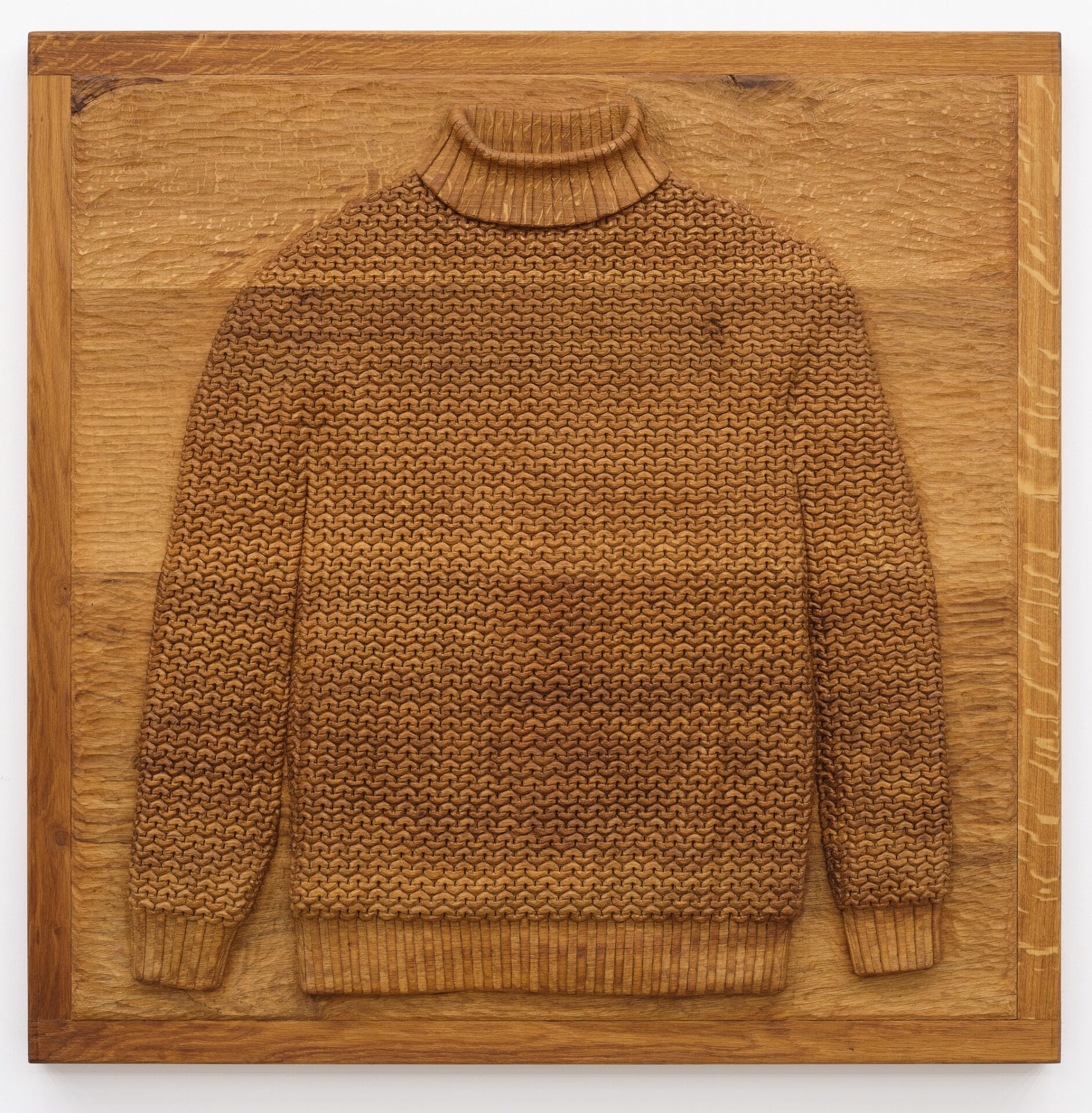This post was originally published on Colossal
“Oak relief with garter stitch pull-over” (2024), oak, 115 x 115 x 9 centimeters. All images © Daniel Dewar and Grégory Gicquel, courtesy of Antenna Space, shared with permission
The term “spoke” has traditionally referred to a piece of split log, like those used as supports in a wagon wheel. Traditional basket-making techniques draw on that same concept by weaving flexible material through a stronger framework. For French artistic duo Daniel Dewar and Grégory Gicquel, notions of interlaced strands, patterns, ecosystems, and vessels shape their solo exhibition, The Weaver and the Spoke, at Antenna Space in Shanghai.
Permaculture, a land management approach geared toward working with, rather than against nature, suffuses Dewar and Gicquel’s work, which often depicts animals and habitats coexisting alongside interspersed human-made elements. The chart-like quilts take cues from folk art or early natural history illustrations, where flora and fauna intermingle with items the artists employ in their studio, like thread and sewing machines. Knitted sweaters, woven loafers, and snail shells continue their interest in repetition, receptacles, and protective layers.
Dewar and Gicquel toy with the distinctions between art and function. The traditional purpose of quilts as bed coverings complements sculptures that double as storage, like in “Oak cabinet with woven loafer shoe and leg.” Hats and shoes nod to the garment industry, making a lighthearted comparison between textile’s pliable role throughout fine art, craft, apparel, and decorative arts.
The Weaver and the Spoke continues through May 11. See more on the artists’ Instagram.

“Embroidered quilt with common flax plant, sticky flax plant, narrow-leaved flax plant, mottled grasshopper, meadow grasshopper, Moroccan grasshopper and bobbin” (2024), cotton and polyester thread on linen fabric, cotton batting, 168 x 140 centimeters

“Oak bench with white-tailed bumblebees, mallow flowers, dandelion flowers and snails” (2024), embroidery on cushion and oak, 60 x 146 x 66 centimeters

“Oak cabinet with woven loafer shoe and leg” (2024), oak, 155 x 65 x 56 centimeters

“Embroidered quilt with earthworms, cockchafer beetle larvae, dandelion plants, Brussels sprout plants, pe-tsaï cabbage plants, kohlrabi cabbage plants, striped shield bug, green bottle flies, cabbage white butterfly caterpillars, cauliflower cabbage plants, savoy cabbage plants, white-tailed bumblebee, cabbage white butterflies, ladybird beetle, red-tailed bumblebee, honey bee, sewing machine and overlocker machine” (2024), cotton and polyester thread on linen fabric, cotton batting, 194 x 248.5 centimeters

“Oak cabinet with courgettes and body fragments” (2024), oak, 155 x 89 x 70 centimeters

“Embroidered quilt with earthworms, cockchafer beetle larvae, false barley grass, red fescue grass, poppy plants, meadow fescue grass, English ryegrass, cinnabar moth caterpillar, giant peacock moth caterpillar, hebe tiger moth, death’s-head hawkmoth caterpillar, magpie moth, giant peacock moth, death’s-head hawkmoth, cinnabar moth, sparrow and recorder” (2024), cotton and polyester thread on linen fabric, cotton batting, 166.5 x 210 centimeters

“Embroidered quilt with earthworms, dandelion plant, clover plants, pea plant, beetroot plants, swallowtail butterfly caterpillar, 22 punctata beetle, ladybird beetle, honey bee, red-tailed bumblebee, white-tailed bumblebee, swallowtail butterfly, Parnassius apollo butterfly, Parnassius apollo butterfly caterpillar, desert cap, cap and work shoe” (2024), cotton and polyester thread on linen fabric, cotton batting, 166.5 x 194.5 centimeters
Do stories and artists like this matter to you? Become a Colossal Member today and support independent arts publishing for as little as $5 per month. The article Daniel Dewar and Grégory Gicquel Cultivate Connections Between Sculpture, Nature, and Craft appeared first on Colossal.





0 Comments